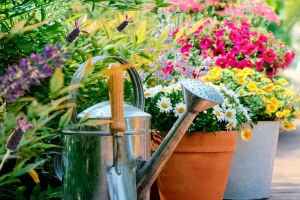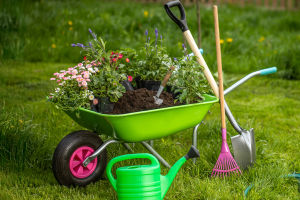Have you ever wondered why plants, which seem so active and vibrant in the daytime, seem to go quiet and still at night? One of the most curious things about plants is that they don't perform photosynthesis in the dark.
You might already know that during the day, plants harness sunlight to make their food through this process, but what happens when the sun sets? Why do plants stop this vital process at night?
Let's explore the relationship between photosynthesis and the plant's circadian rhythm to find out more.
What is Photosynthesis?
Before diving into why photosynthesis doesn't happen at night, let's quickly recap what this process actually is. Photosynthesis is the way plants use light, usually from the sun, to produce food (in the form of glucose) and oxygen. This process occurs in the plant's chloroplasts, using chlorophyll (the green pigment) to capture sunlight.
The plant takes in carbon dioxide (CO2) from the air and water (H2O) from the soil, using the energy from the light to create glucose and release oxygen as a by-product.
The Role of Sunlight
Sunlight is a crucial factor in photosynthesis because it provides the energy plants need to drive this complex process. During the day, when sunlight is available, plants absorb it through their leaves, initiating photosynthesis. However, sunlight isn't just about having light; it's about having the right kind of light to fuel the chemical reactions. In the absence of light, these reactions can't occur, and the plant must rely on other means to survive.
Why Don't Plants Photosynthesize at Night?
So, why don't plants perform photosynthesis in the dark? The key reason lies in the energy requirements of the process. Photosynthesis involves complex chemical reactions that rely on sunlight for energy. Once the sun sets, plants don't have access to this energy source, and therefore cannot perform the process that requires light. Without light, the necessary components (like chlorophyll and sunlight) cannot drive the reactions involved in photosynthesis.
However, that doesn't mean plants are idle during the night. Instead of photosynthesis, plants undergo other essential processes that help them thrive, such as respiration.
Respiration: The Night Shift
While photosynthesis doesn't occur at night, plants still need energy to grow, repair, and carry out other vital functions. That's where respiration comes in. Unlike photosynthesis, respiration is a process where plants break down the glucose they created during the day (through photosynthesis) to release energy. This energy is used to fuel the plant's growth, repair cells, and maintain basic functions.
During respiration, plants take in oxygen and release carbon dioxide. It's similar to how animals, including humans, breathe and use oxygen to create energy. The key difference, however, is that respiration occurs 24 hours a day, not just at night, but without sunlight, it becomes the primary energy source at night.
Circadian Rhythm: The Internal Clock
The reason why plants stop photosynthesizing at night is also tied to their circadian rhythm, the internal biological clock that regulates many of their processes. Just like humans and animals have a daily rhythm, plants also have internal clocks that control when certain processes happen. The circadian rhythm in plants helps synchronize photosynthesis, respiration, and other functions to ensure they occur at the most efficient times.
At night, the circadian rhythm signals the plant to shift from photosynthesis to respiration, conserving energy while still maintaining essential functions. This rhythm ensures that the plant is not overexerting itself or wasting energy by trying to perform photosynthesis without sunlight.
The Importance of Nighttime for Plants
While it might seem like plants are taking a break at night, this time is actually essential for their health and survival. The absence of photosynthesis at night helps plants conserve energy, maintain a balanced cycle, and focus on internal repairs. During the day, plants need to produce energy through photosynthesis, but at night, they need time to digest and utilize that energy efficiently.
Nighttime also plays a role in the plant's ability to respire and grow. During the dark hours, plants carry out essential repair processes, such as fixing damaged cells and growing roots or stems. They need this time to "rest" and ensure that they are ready for the energy demands of the following day.
Conclusion: A Delicate Balance
In conclusion, plants don't perform photosynthesis at night because they rely on sunlight to power this energy-intensive process. However, they don't just sit idle—plants switch to respiration, breaking down the glucose they created during the day to maintain energy levels and perform essential growth and repair tasks. Their circadian rhythm ensures that everything happens at the right time, optimizing their energy usage.
It's fascinating to think about how plants have developed such a sophisticated internal system, balancing their activities between light and dark. The next time you observe your plants, you'll know that while they seem still at night, they are hard at work in their own unique way, keeping themselves healthy and ready to thrive when the sun rises again.


